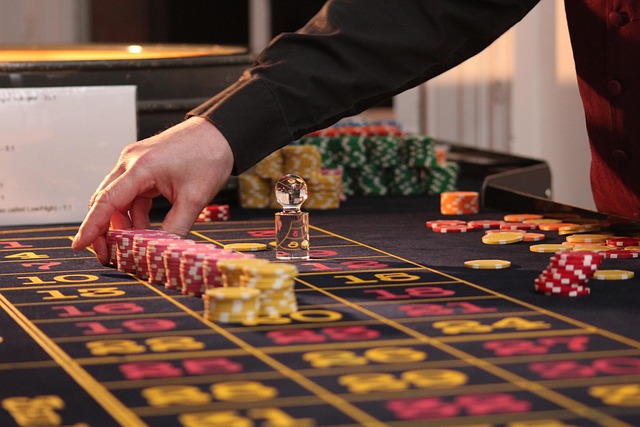Introduction: Rock Bottom to Rebound
There’s a point in some people’s stories where the numbers don’t lie—the account hits zero, the debts pile high, and the options shrink fast. For many, that’s where the story ends. But for a few, it’s where the comeback begins.
The line between total financial ruin and redemption is razor-thin. Timing, mindset, and one decisive move can redraw everything. These stories of collapse and resurrection aren’t just good drama—they’re maps. If you’ve ever taken a risk, if you’ve ever felt the edge getting closer, you’ll see something familiar in them.
They speak to more than luck. They show how failure refines strategy, how loss forces clarity, and how humility becomes fuel. Past the headline thrills and big payoffs, there’s something even more valuable: the method. What worked, what didn’t, and how it all got turned around. For anyone who’s gambled big—on a startup, a bet, or themselves—these redemption arcs hold lessons that cut deeper than hype.
The Psychology of a Comeback
Hitting financial zero does something permanent to the way you think. There’s no more pretending, no buffer to hide behind. The distractions fall away, and all you’re left with is clarity—or chaos. The people who come back from that place don’t rely on luck. They rebuild with intention, and they work with what they’ve got. Strategy replaces hope. Grit replaces impulse. Discipline becomes non-negotiable.
The shift often looks like this: budgeting every dollar like it’s your last, questioning every move, and setting goals that build—not just survive. These rebounders become lean operators of their own lives. They stop chasing flashes and start building systems.
Certain traits keep showing up. Focus helps them drown out noise. Humility forces them to learn fast. Accountability keeps them honest—no blaming, no hiding. And they’ve usually developed a high tolerance for discomfort. That toughness isn’t loud or cocky. It’s just consistent.
After the fall, most winners aren’t trying to win big anymore. They’re trying to never collapse again. That change in motive? It’s what keeps them on track.
Case Study 1: The Sports Bettor Who Lost It All—Then Won Strategically
He started out hot. That kind of streak that makes you think you figured it out—tapping odds, riding momentum, walking with casual swagger into sportsbooks like he owned the place. For a few months, the winnings stacked. And just like that, so did the ego. No spreadsheet, no strategy—just vibes. Confidence turned into overconfidence, then into recklessness. Eventually, the house won.
It wasn’t one bad bet. It was a gradual slide: ignoring bankroll limits, chasing losses, ignoring market signals. He lost everything. More than money—it was identity, stability, and pride crashing in silence. The gut punch wasn’t the zero balance; it was realizing he’d never learned the game he thought he mastered.
The comeback started in a quiet way: notebooks, late nights, humility. He learned bankroll discipline the hard way—never stake more than 2% of total funds. He dove into data, studied closing line value, tracked every wager. Emotion was benched; math started calling the plays.
Instead of chasing thrills, he bet edges. Slow wins, small wins, intentional plays. The confidence came back—not chest-puffed, but grounded. This time, he didn’t ride luck. He built process. And he won.
For deeper context: Strategies from the Most Successful Sports Bettors
Case Study 2: Tech Entrepreneur to Broke—Then Back With a Smarter Play
At first, it looked like a rocket ship. The tech startup had buzz, VC funding, a rented downtown loft, and a launch party that felt more like a music video set. But the foundation? Pure hype. Marketing budgets ballooned while the product lagged. There was no real market fit, just noise.
When the money ran out, it was fast and brutal. Layoffs. Calls ignored. Credit burned. But after hitting zero, the founder did what many don’t: slowed everything down. Dialed in a lean version of the product. Built it around real customer needs. No flashy pitch decks—just a focus on solving one small but painful problem.
Round two wasn’t sexy, but it stuck. Quiet revenue, measured growth, and a product with purpose. The difference? He learned to ignore the applause and focus on architecture. Scaled only what was working. Kept costs honest.
The takeaway: Flashy doesn’t equal viable. If your fundamentals are shaky, hype just amplifies your crash. The second act worked because it was grounded, disciplined, and tuned to value—not visibility.
Case Study 3: Ex-Casino Addict Turned Financial Coach
He didn’t walk into bankruptcy. He sprinted. Years of chasing losses across card tables and slot machines had turned weekend getaways into financial hemorrhages. It wasn’t about fun anymore—it was about the next win, the one that would make all the losses make sense. Predictably, that win never came. Instead, he ended up emptying savings accounts, maxing out credit lines, lying to friends, and spiraling toward total collapse.
The wake-up call wasn’t flashy or dramatic. It was a quiet morning with an eviction notice on the table and no gas in the car. For the first time, he stopped blaming the system, the odds, or his luck. He looked in the mirror and admitted: this didn’t just happen to him—he made it happen.
From that moment, everything changed. Therapy first. Then budgeting—with real numbers, not dreams. A survival job became a stepping stone. Eventually, he got certified as a financial coach—not to erase his past, but to use it. Now he helps others peel back the same layers of addiction, denial, and bad math.
His YouTube channel doesn’t promise jackpot strategies. It teaches people how not to lose their whole lives trying to win. These days, his currency is trust—earned slowly, paid in clarity. He’s not just debt-free. He’s finally in the black emotionally, too.
Common Threads in Every Redemption
Redemption doesn’t start with regret—it starts with reflection. Regret is about wishing things had turned out differently. Reflection is about facing the facts, calling out the flaws in your choices, and doing something about it. The people who clawed their way back from rock bottom didn’t just feel bad. They broke down what happened, identified where they screwed up, and built a new plan from there.
That plan wasn’t a shortcut. Instant gratification—the wild risks, the overnight bets, the expensive gambles—got them into the mess. Climbing out meant doing the opposite: playing the long game. Saving instead of spending. Patience instead of panic. Thinking five moves ahead. The win didn’t come fast, but it came because it was built to last.
And all that takes discipline. Solid, unforgiving, close-to-the-bone discipline. Not just with money, but with time, attention, and ego. The ones who made it back didn’t just fix their finances. They rebuilt their approach to everything—fewer blind spots, more boundaries, and a ruthless ability to know when they’re about to make another bad call. It’s not flashy, but it works.
Lessons Worth Taking
Rock Bottom Isn’t the End—it’s the Start
Failure feels final when you’re in it, but for many comeback stories, rock bottom was where true clarity began. Hitting financial zero forced people to reevaluate their habits, goals, and mindset. Instead of being defined by the loss, they used it as the foundation for something more resilient.
- Loss often provides the raw truth needed for real growth
- Stripped of distractions, priorities become clear
- The comeback begins when excuses end
Systems > Luck
While luck can play a role in recovery stories, the long-term wins almost always come from systems, not flukes. Structured strategy, clear financial habits, and accountability are the real engines of sustainable success.
- Luck opened doors, but systems kept them open
- Habitual discipline outperforms chaotic windfalls
- Every success story had a repeatable strategy behind it
The First Step? Ownership
No one rebounds without humility. Each featured comeback started with someone fully owning their choices and acknowledging where things went wrong. This self-awareness becomes the catalyst for building something better.
- Blame delays progress; ownership activates it
- Acceptance leads to focused action, not denial
- True change begins when the excuses end
These lessons offer more than inspiration—they reveal how redemption is engineered, one honest step at a time.
Conclusion: Use the Fall as Fuel
Stories of financial redemption may sound like dramatic plot lines, but the real takeaway lies in what they teach. These aren’t just tales of luck or timing—they’re step-by-step examples of how to recover with purpose.
More Than Just Motivation
Don’t mistake these stories for simple inspiration.
- Each comeback reveals a process, not just a happy ending
- They serve as blueprints for those brave enough to start over
- Behind each win is a consistent structure: reflection, recalibration, and disciplined action
Redemption Requires Strategy
Turning failure into a future isn’t accidental. It requires:
- A conscious decision to stop spiraling
- Honest evaluation of past mistakes
- A tangible plan with accountability built in
Success the second time around often looks less flashy—but far more stable. It’s about building smarter, not faster.
Anyone Can Rebuild—If They Choose To
You don’t need a windfall or insider access to turn things around. What you do need:
- A shift in mindset from victim to architect
- Practical habits that replace risky behavior
- The patience to let progress compound
Redemption is possible for anyone—but only when it’s actively claimed, not passively hoped for.


 Thalara Kelricsona is the co-founder of mediagamblesaga and a key voice in its content direction. With a unique blend of creativity and industry knowledge, she explores the intersection of technology and user experience in gambling. Her forward-thinking approach ensures the site remains a trusted resource for readers seeking clarity on the fast-changing digital gambling landscape.
Thalara Kelricsona is the co-founder of mediagamblesaga and a key voice in its content direction. With a unique blend of creativity and industry knowledge, she explores the intersection of technology and user experience in gambling. Her forward-thinking approach ensures the site remains a trusted resource for readers seeking clarity on the fast-changing digital gambling landscape.

